Today’s Economic Times carries an article about “The Dark Secret of India’s Start-up Boom”. This implores the Modi Government to make bold moves regarding the onerous regulations that startups face.
iSPIRT is also part of the new Startup Bridge India campaign, which urges the Indian government to adopt best practices from around the globe to help startups start, flourish and exit. We’ve been working alongside a consortium of lawyers, think tanks, entrepreneurs and venture capital firms from TiE Silicon Valley to put together detailed legal language and fixes in the current policy. Startup Bridge India is hosting an online petition that demands simpler processes for investing in India’s future, a petition intended to show widespread public support for these important initiatives. Every signature matters and timing is critical to help bring about much needed policy change. You can sign the petition on startupbridgeindia.com.
iSPIRT has been involved in nitty-gritty work with the Government in the past 75 days around its Stay-in-India Checklist. Here is what’s been happening…
What is Stay-in-India Checklist?
More and more technology startups are being forced to redomicile to Singapore or US due to a host of policy irritants that disparage the Indian startup ecosystem. After careful consideration, iSPIRT’s Stay-and-List-in-India Policy Team identified 34 key issues that need to be resolved immediately to stop this exodus. The list includes issues covering incorporation, fund raising, operations, taxation, exits, closure, payments, and intellectual property.
How was it created?
We looked at submissions from TiE, NASSCOM, IVCA and FICCI and put them into a single spreadsheet. After de-duplication we had about 120 items. These were then classified into hygiene and incentives categories. Based on consultations with startups, the hygiene set was further refined to create the Stay-in-India Checklist.
What are some of the key items on Stay-in-India Checklist?
The Checklist includes requests for favourable IP tax regime, harmony in taxation of listed and unlisted securities, relaxed external commercial borrowing norms, faster incorporation and liquidation processes, and permitting convertible notes, indemnity escrows, and deferred consideration in foreign investment transactions.
Who manages the Checklist?
iSPIRT Stay-and-List-in-India Policy Expert team managed the Checklist. The team has 7 members – two startup CFOs, two VCs and three tax/legal experts. Mohandas Pai as the mentor to the team.
What’s been the progress on the Checklist?
The Checklist received mixed responses from the regulators. While certain items (like permitting share swap as a valid method of share transfer in FDI transactions) were allowed during the discussion process itself (hence removed from the Checklist), the regulators were hesitant in permitting other items (such as tax exemptions). Largely, the regulators were receptive to the suggestions. We had detailed discussions on each item of the Checklist with the relevant regulators. Wherever the regulators were unable to implement our suggestions, they conveyed to us the concerns that restrained them. We hope these concerns are alleviated in due course, and they are able to implement all suggestions.
What are some of the key meetings that have taken place?
We have a good partnership with Mr. Amitabh Kant, Secretary, DIPP on this. His office has setup about two dozen meetings with the relevant regulators. In these meeting, iSPIRT plays the role of being the subject matter expert on items in the Stay-in-India Checklist.
The whole process kicked into high gear after an intense and productive meeting with Mr. Amitabh Kant on Oct 23rd and with Dr. Raghuram Rajan on Oct 24th. This was followed by a meeting with Principal Secretary, Mr. Nripendra Mishra at PMO on Nov 9th. Subsequently, meetings with Revenue Secretary and MCA Secretary took place. These led to numerous follow-up meetings and calls with relevant officers. Nakul Saxena has coordinated all these meetings.
 What are some of the learning’s from this effort?
What are some of the learning’s from this effort?
There is very little awareness about the world of technology startups. So education on the realities faced by the startups is critical. Sometimes one runs into situations where the issue can be closed without much effort. At other times, the dichotomy between regulatory agencies is most frustrating. Also, because of the way liberalisation of regulatory framework has been widely misused in India, the authorities exercise great caution before liberalising any regulation. The approach, therefore, is to not permit any ‘risky’ regulation, rather than punishing those who misuse it. Overall, we find the receptivity of the government agencies is good. Our positioning of being a think tank, focussed on the national agenda, rather than being a tradebody is helping a lot as well.
Guest post by Sanjay Khan, Khaitan & Co





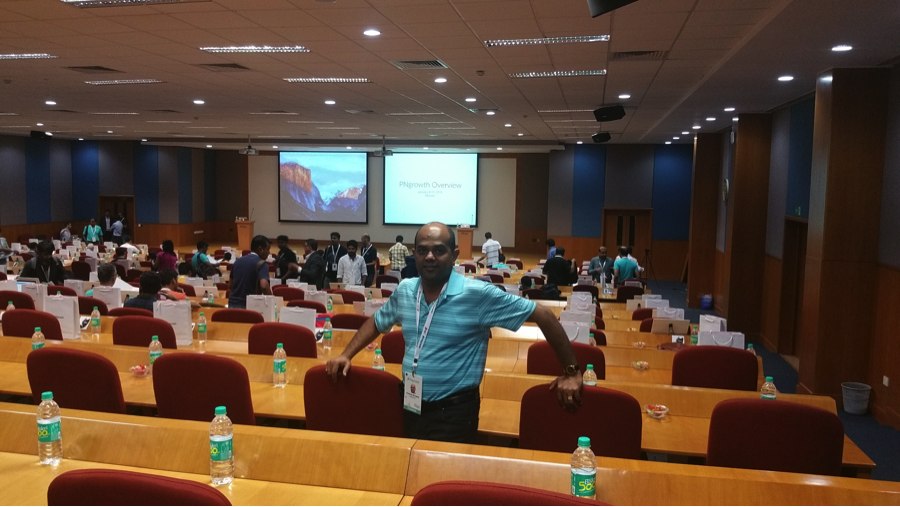
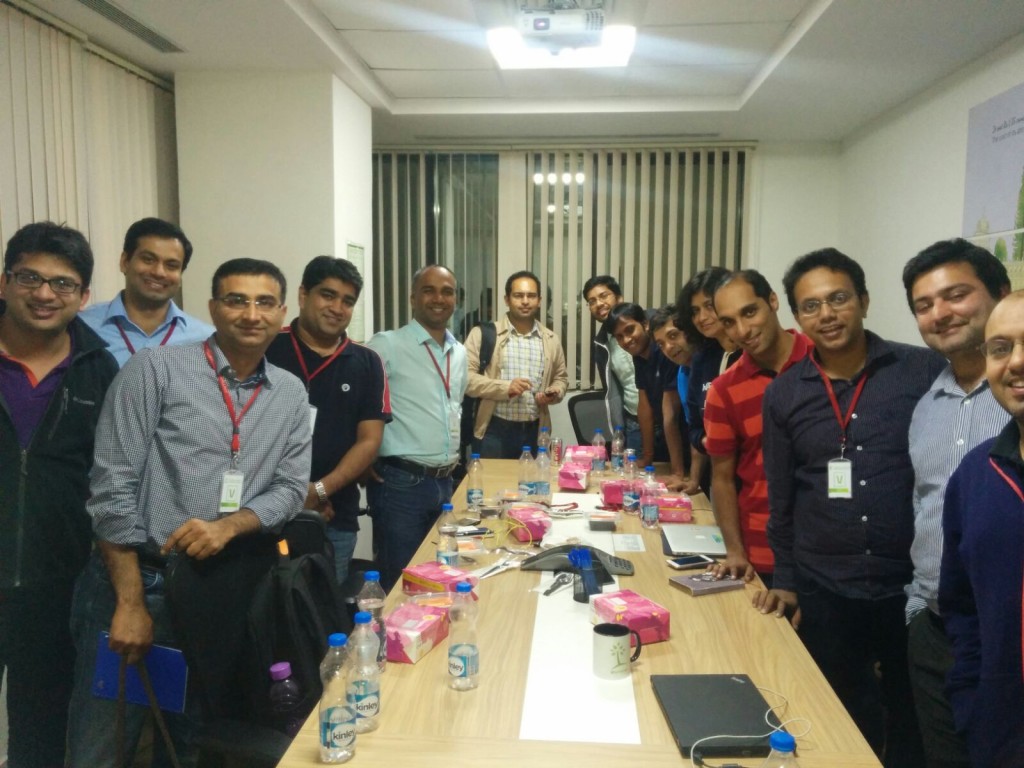 In this Round table, Aneesh was leading and moderating the discussion. He leveraged the experience of other founders which made the most out of few hrs of interaction. The participants are founders of mid-stage startups, who have good-size customers and have decent ARR (Annual Recurring Revenue), growing and scaling.
In this Round table, Aneesh was leading and moderating the discussion. He leveraged the experience of other founders which made the most out of few hrs of interaction. The participants are founders of mid-stage startups, who have good-size customers and have decent ARR (Annual Recurring Revenue), growing and scaling. How to acquire customers in new international market?
How to acquire customers in new international market?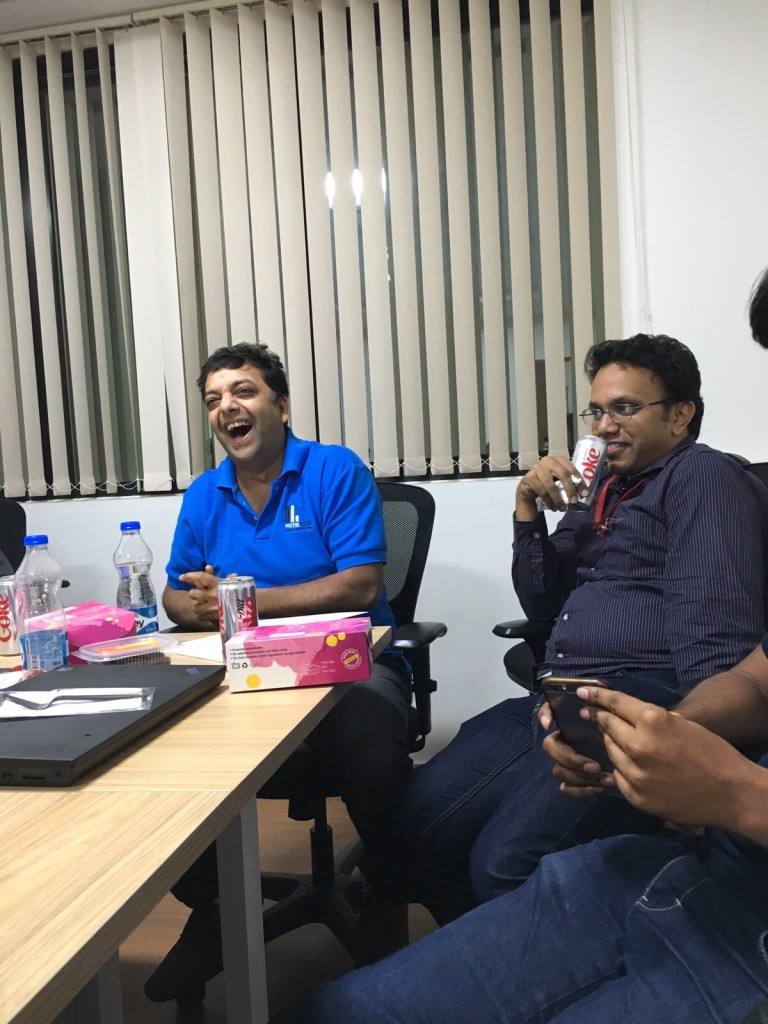 How is to do pricing for your product?
How is to do pricing for your product?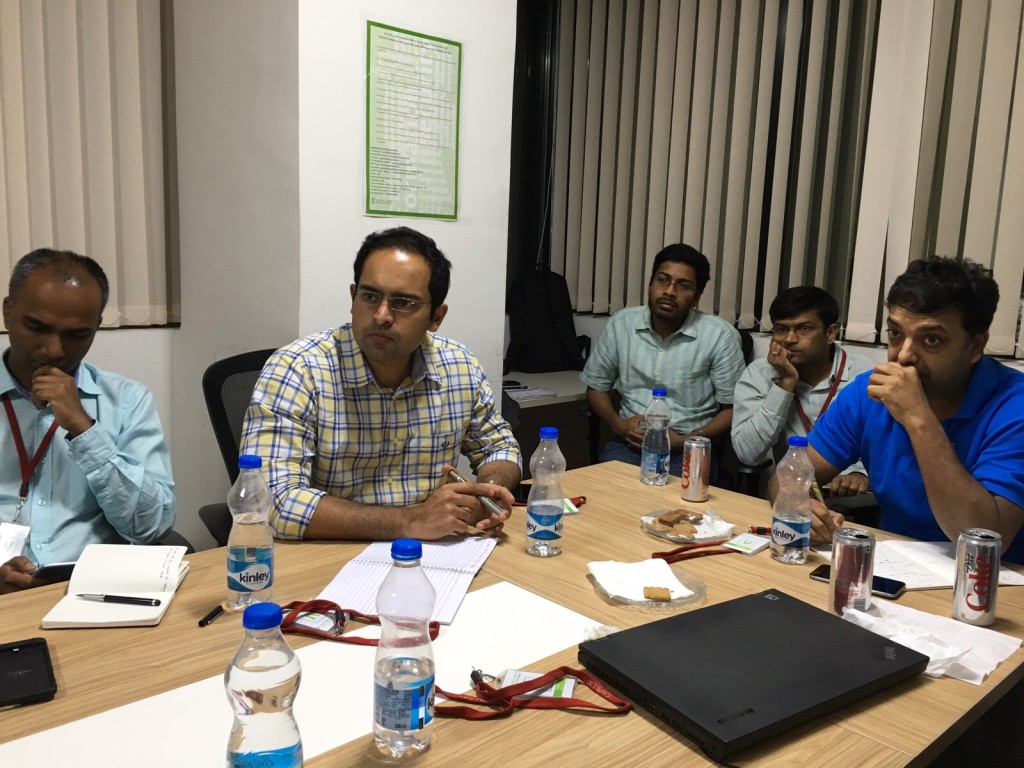 How to provide incentives for your IS(Inside sales) team?
How to provide incentives for your IS(Inside sales) team? He is the author of the book Branding INDIA, a key driver behind many successful branding INDIA campaigns like Make-In India, Incredible India, and Athethi Devo Bhava (Guest is God) campaigns. He is a decision maker par excellence and above all the Secretary of DIPP (Department of Industrial Policy & Promotion). Mr. Amitabh Kant. who is now also in charge of Startup India, Standup India campaign, met up with iSPIRT, in Bangalore to understand the plethora of Technological Break-throughs and Policy Transformations that iSPIRT is facilitating for the benefit of the Startup Community. He provided some very useful advise by participating in interactive session for close to 2.5 hours.
He is the author of the book Branding INDIA, a key driver behind many successful branding INDIA campaigns like Make-In India, Incredible India, and Athethi Devo Bhava (Guest is God) campaigns. He is a decision maker par excellence and above all the Secretary of DIPP (Department of Industrial Policy & Promotion). Mr. Amitabh Kant. who is now also in charge of Startup India, Standup India campaign, met up with iSPIRT, in Bangalore to understand the plethora of Technological Break-throughs and Policy Transformations that iSPIRT is facilitating for the benefit of the Startup Community. He provided some very useful advise by participating in interactive session for close to 2.5 hours.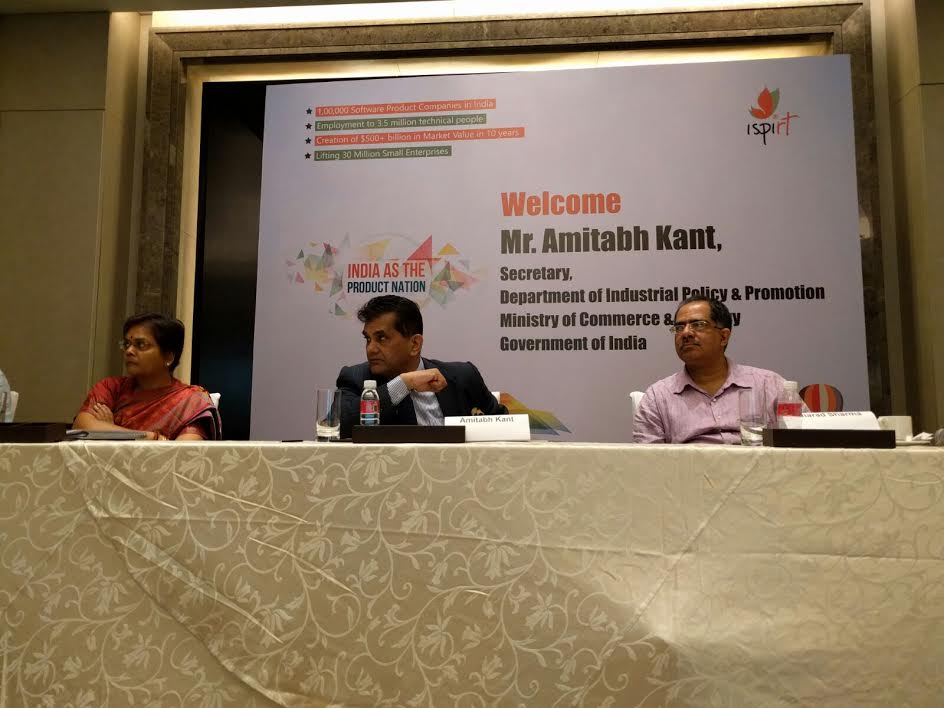 iSPIRT Show-case of various Ongoing Initiatives
iSPIRT Show-case of various Ongoing Initiatives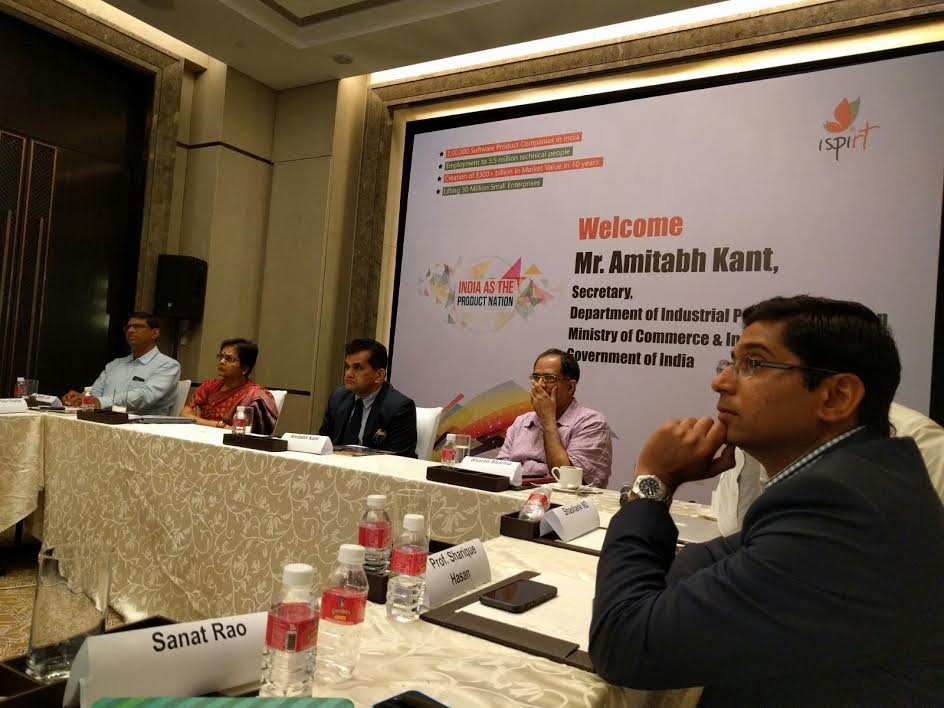 Insights and Advise from Mr. Amitabh Kant
Insights and Advise from Mr. Amitabh Kant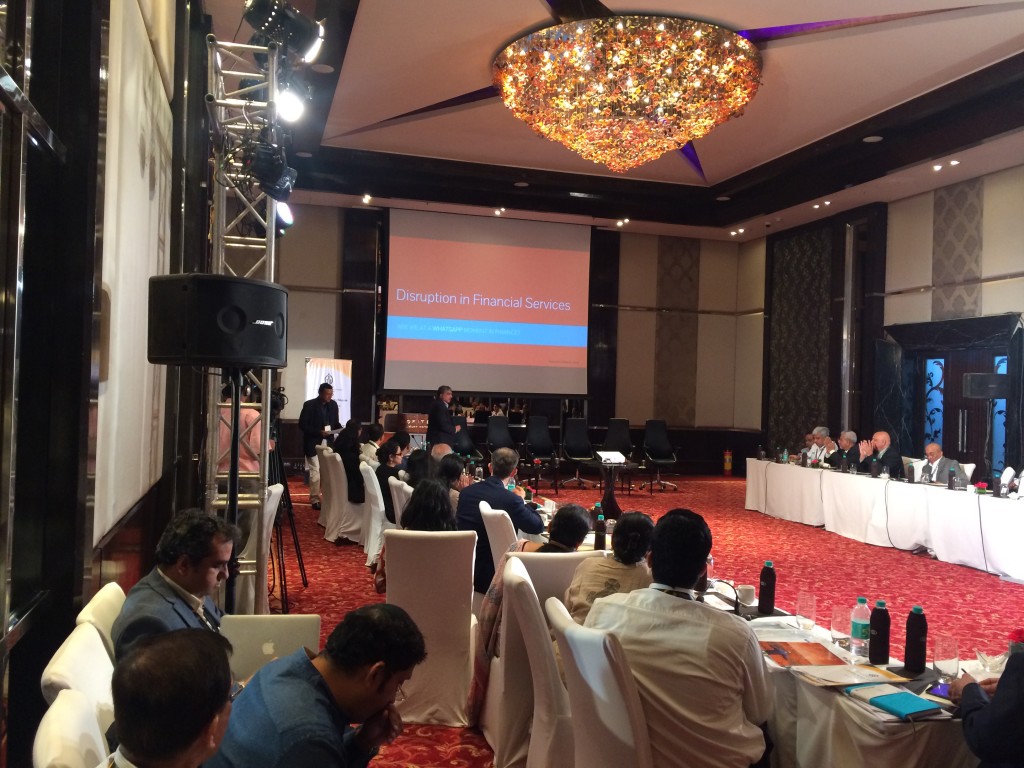 The keynote address was followed by sessions and demos by four select software product companies that have introduced innovative products and / or business models leveraging these influences and making the ‘new’ Fintech happen.
The keynote address was followed by sessions and demos by four select software product companies that have introduced innovative products and / or business models leveraging these influences and making the ‘new’ Fintech happen.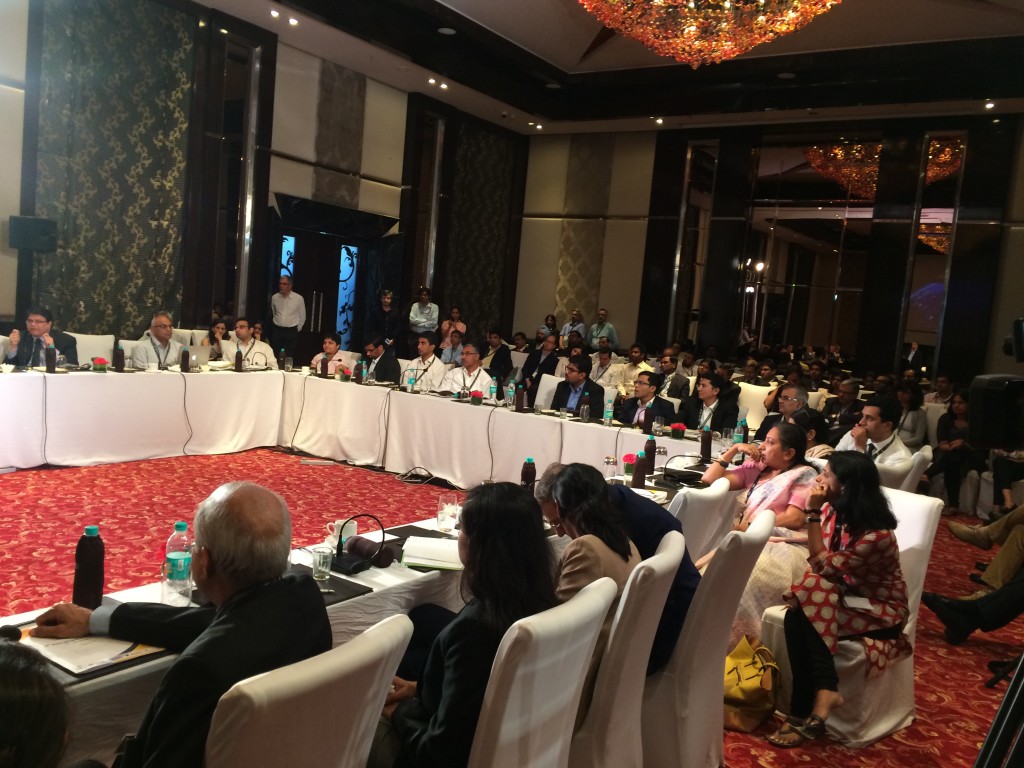 The panel where status quo meets disruption was highly animated discussion led by Prof Phatak and with two participants from the startup/VC community – Haresh Chawla from IVFA & Sanjay Swamy from Prime Ventures – Dr Ajay Shah and Anand Bajaj, Head of Innovation at YesBank. Dr Phatak opened by stating the time is ripe for disruption and to move to a cashless and cardless world of mobile only payments. Mr Chawla was of the view that innovations will come once the cost of moving money between accounts is near zero – and the next wave of innovations will be around applications of low cost payments. Dr Shah was of the view that the regulator still needs to encourage disruptions and remains a risk to the innovation ecosystem if they stop innovations. Mr Bajaj, fresh from the signing of the MOU between YesBank and iSpirt to setup a framework for a banking app store reiterated the bank’s desire to partner with the startups as they innovate. Mr Swamy called for the need to remove some of the obstacles in on-boarding customers for electronic payment acceptance, and asked for a framework for piloting new concepts. Overall the panel raised several real issues that were actively debated – questions from the audience also echoed the fact that most of the points raised were relevant and real issues. Over the coming months we hope the banking industry will address these issues head-on and SRT the stage for India to maximize the opportunity of the new disruptive technologies from Aadhaar to biometric authentication to IMPS and the Unified Payment Interface.
The panel where status quo meets disruption was highly animated discussion led by Prof Phatak and with two participants from the startup/VC community – Haresh Chawla from IVFA & Sanjay Swamy from Prime Ventures – Dr Ajay Shah and Anand Bajaj, Head of Innovation at YesBank. Dr Phatak opened by stating the time is ripe for disruption and to move to a cashless and cardless world of mobile only payments. Mr Chawla was of the view that innovations will come once the cost of moving money between accounts is near zero – and the next wave of innovations will be around applications of low cost payments. Dr Shah was of the view that the regulator still needs to encourage disruptions and remains a risk to the innovation ecosystem if they stop innovations. Mr Bajaj, fresh from the signing of the MOU between YesBank and iSpirt to setup a framework for a banking app store reiterated the bank’s desire to partner with the startups as they innovate. Mr Swamy called for the need to remove some of the obstacles in on-boarding customers for electronic payment acceptance, and asked for a framework for piloting new concepts. Overall the panel raised several real issues that were actively debated – questions from the audience also echoed the fact that most of the points raised were relevant and real issues. Over the coming months we hope the banking industry will address these issues head-on and SRT the stage for India to maximize the opportunity of the new disruptive technologies from Aadhaar to biometric authentication to IMPS and the Unified Payment Interface.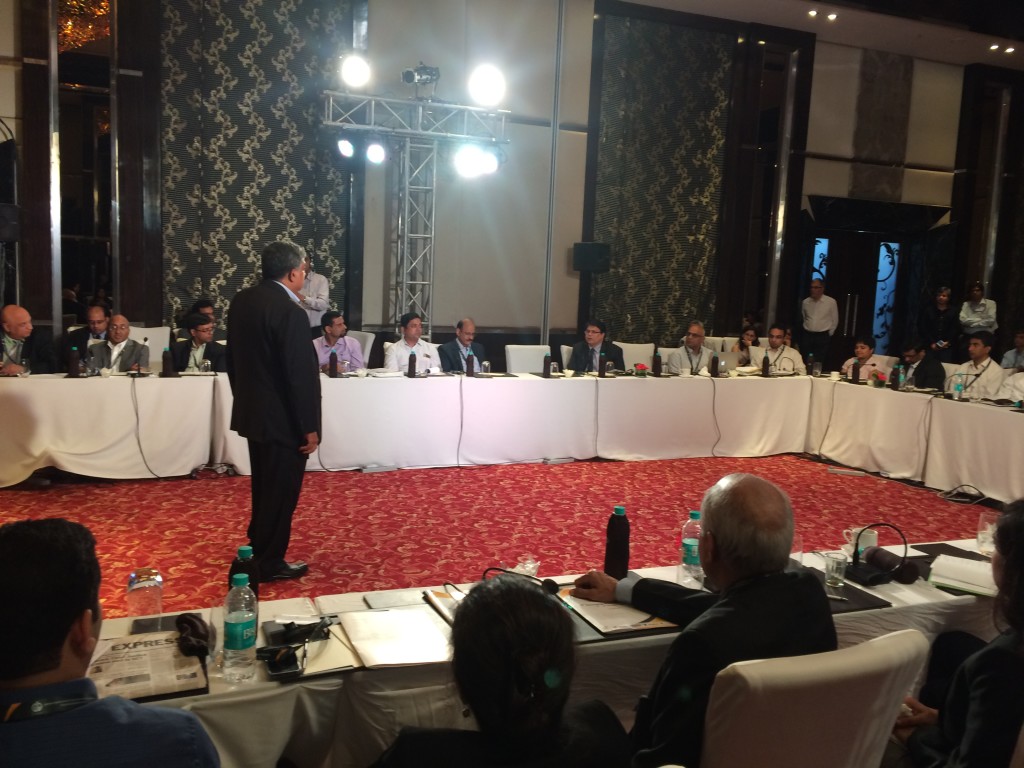 This is was the first Fintech event for iSPIRT in Mumbai and it received record registrations. IGIDR FRG event organizers expressed desire to conduct a dedicated event based on the positive feedback received.
This is was the first Fintech event for iSPIRT in Mumbai and it received record registrations. IGIDR FRG event organizers expressed desire to conduct a dedicated event based on the positive feedback received.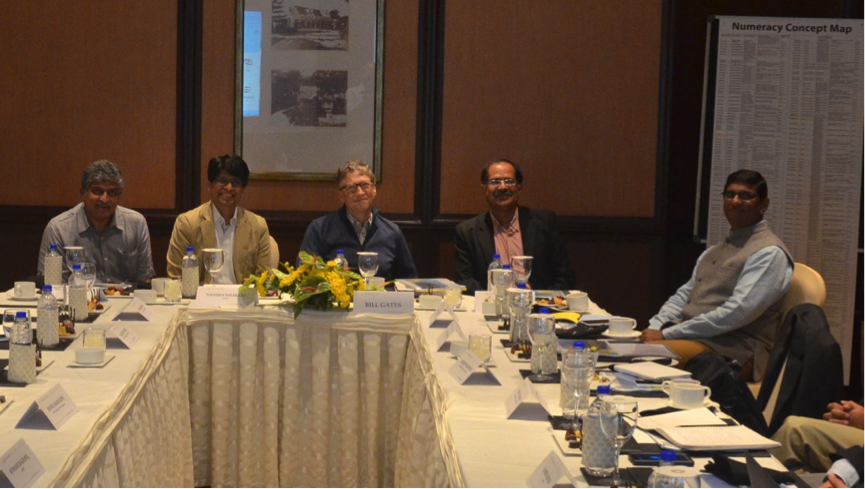 There were three broad themes that were covered — finance, healthcare and education — each of which forms an important part of the Gates Foundation’s work in philanthropy. Product demos included the
There were three broad themes that were covered — finance, healthcare and education — each of which forms an important part of the Gates Foundation’s work in philanthropy. Product demos included the 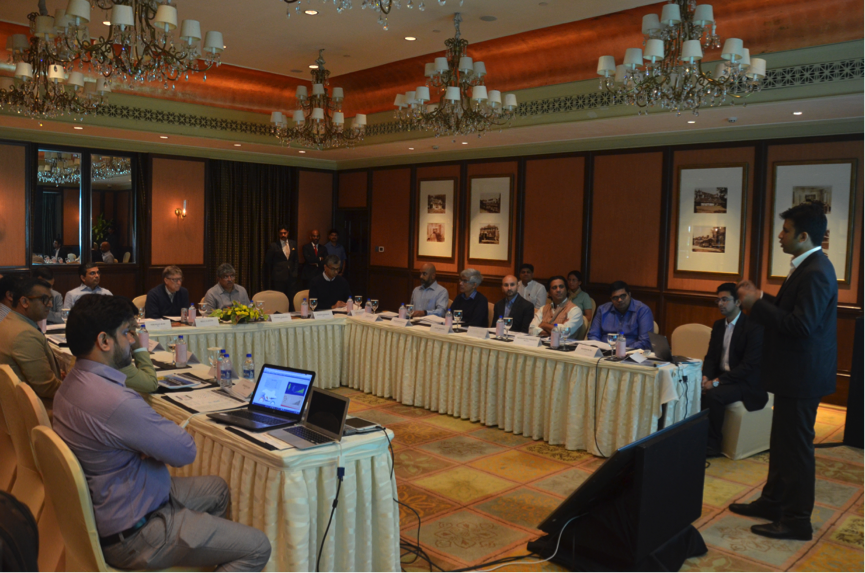 Bill Gates observed that India is producing cutting-edge work and there are few countries which can boast of a digital infrastructure as sophisticated as we are producing here. With such positive encouragement from one of the most accomplished individuals in the world, the vision of transforming India at large through application of technology has received a new impetus.
Bill Gates observed that India is producing cutting-edge work and there are few countries which can boast of a digital infrastructure as sophisticated as we are producing here. With such positive encouragement from one of the most accomplished individuals in the world, the vision of transforming India at large through application of technology has received a new impetus.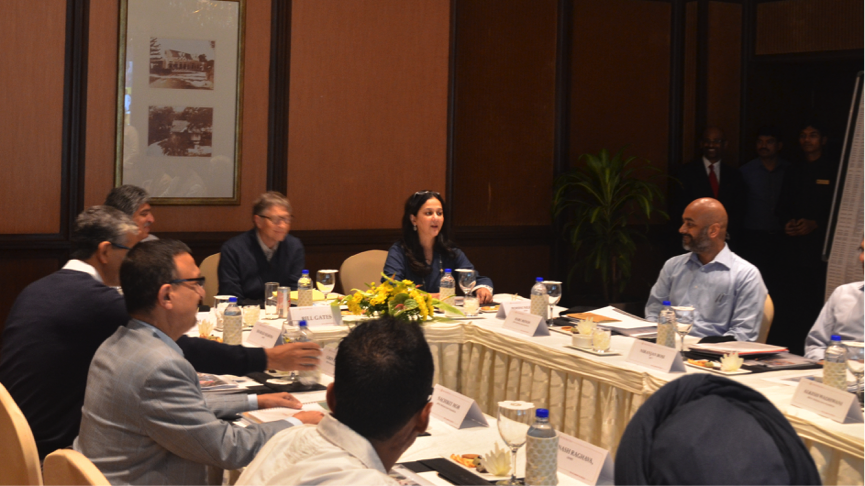 Guest Post by
Guest Post by  Centuries ago Columbus took an adventurous sea journey to discover India in search of gold and in the process stumbled upon America. It is ironical that after ages we Indian product entrepreneurs are re-embarking upon the journey to rediscover America in search of gold, just that we no longer trust the sea and prefer to go via the cloud.
Centuries ago Columbus took an adventurous sea journey to discover India in search of gold and in the process stumbled upon America. It is ironical that after ages we Indian product entrepreneurs are re-embarking upon the journey to rediscover America in search of gold, just that we no longer trust the sea and prefer to go via the cloud.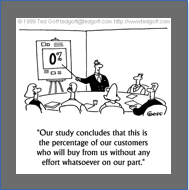 There is a school of thought which believes inbound marketing using content and blogs gives you good quality low cost leads over time. I personally belong to that group having built SalesPanda, an inbound marketing product. But there is another set of people who feel its better to go target the exact customers you want to bring in via outbound. I must say this round table was dominated more by the latter than the former. Like Sachin from Insidesalesbox.com shared the perfect analogy of fishing with a spear and not the net, its yours to choose. In the same room we had two successful startups using both the methodologies successfully. On one side we had Samir our speaker from shop socially who has 70% of leads from outbound email and telecalling and other side we had Sidharth from Wingify(VWO) who have 70% leads from inbound content. Ideally you need to master both and leverage one with the other.
There is a school of thought which believes inbound marketing using content and blogs gives you good quality low cost leads over time. I personally belong to that group having built SalesPanda, an inbound marketing product. But there is another set of people who feel its better to go target the exact customers you want to bring in via outbound. I must say this round table was dominated more by the latter than the former. Like Sachin from Insidesalesbox.com shared the perfect analogy of fishing with a spear and not the net, its yours to choose. In the same room we had two successful startups using both the methodologies successfully. On one side we had Samir our speaker from shop socially who has 70% of leads from outbound email and telecalling and other side we had Sidharth from Wingify(VWO) who have 70% leads from inbound content. Ideally you need to master both and leverage one with the other.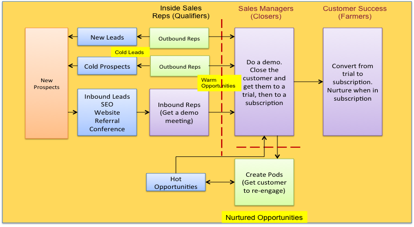 Once the database is ready, import it to a marketing automation tool, in case of sell socially they use Pardot. Create a drip marketing campaign across different offering. Segregate the prospects as R,C,O – People who respond,click or open your mailers. The inside sales team calls out to people who atleast clicked on the email so its never a cold call as atleast the customer has heard about you before. The chart below details the emailing process. The prospects move to a CRM solution where the lead is progressed. Shop socially use Salesforce and Sugarcm but any other good CRM would do. Ajay from Salezshark also shared how their CRM software provided an integrated mobile ready solution. It have built in contact database seamlessly integrated into the solution. Do check out !
Once the database is ready, import it to a marketing automation tool, in case of sell socially they use Pardot. Create a drip marketing campaign across different offering. Segregate the prospects as R,C,O – People who respond,click or open your mailers. The inside sales team calls out to people who atleast clicked on the email so its never a cold call as atleast the customer has heard about you before. The chart below details the emailing process. The prospects move to a CRM solution where the lead is progressed. Shop socially use Salesforce and Sugarcm but any other good CRM would do. Ajay from Salezshark also shared how their CRM software provided an integrated mobile ready solution. It have built in contact database seamlessly integrated into the solution. Do check out !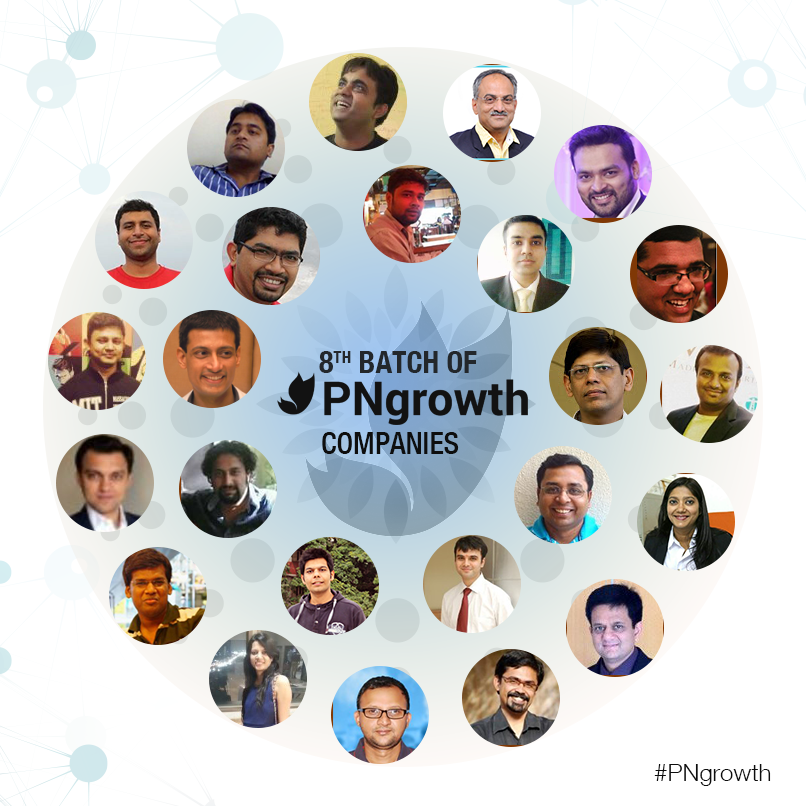 So here we go, the last 25. #Pngrowth 2016 is well and truly on!
So here we go, the last 25. #Pngrowth 2016 is well and truly on!